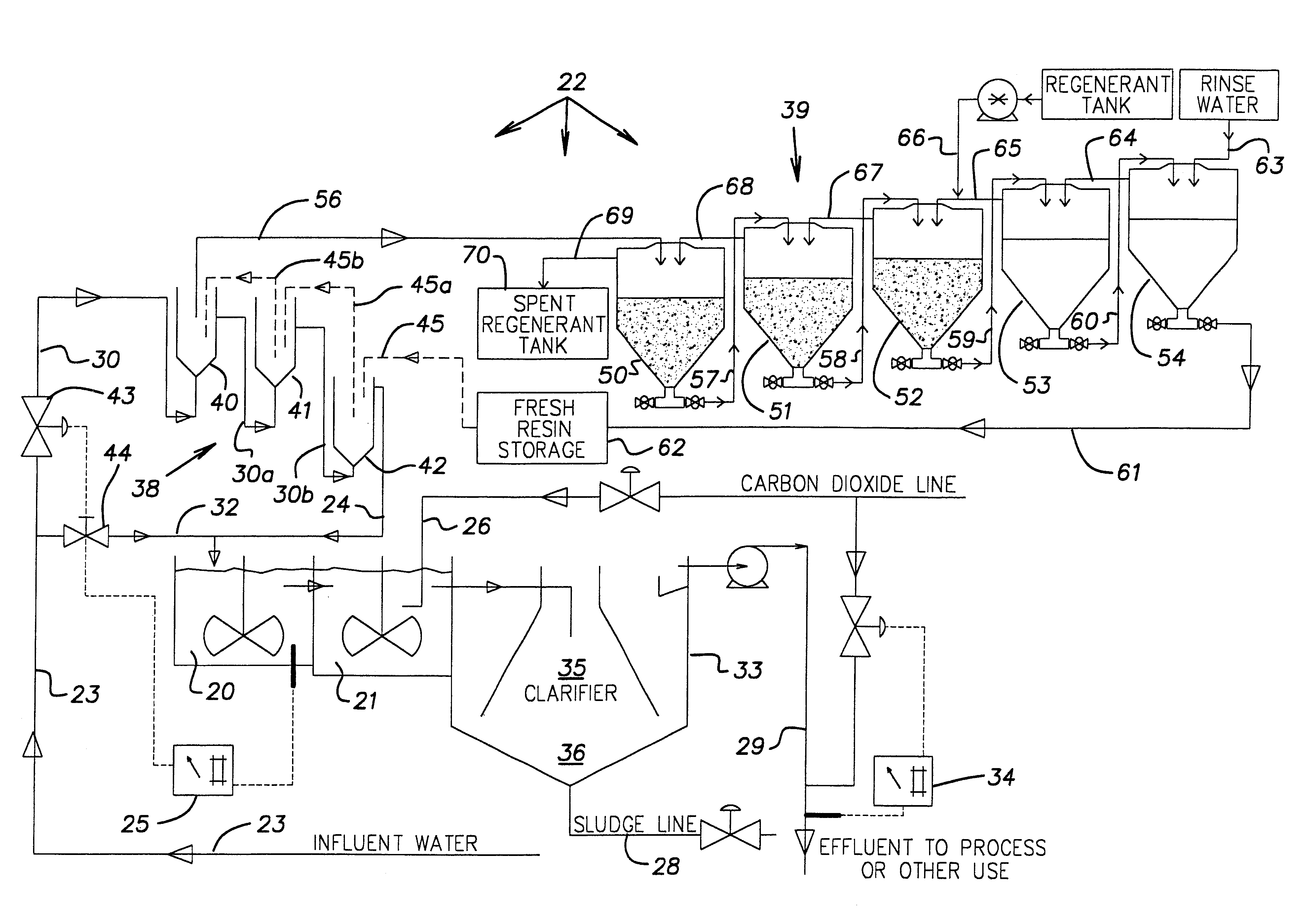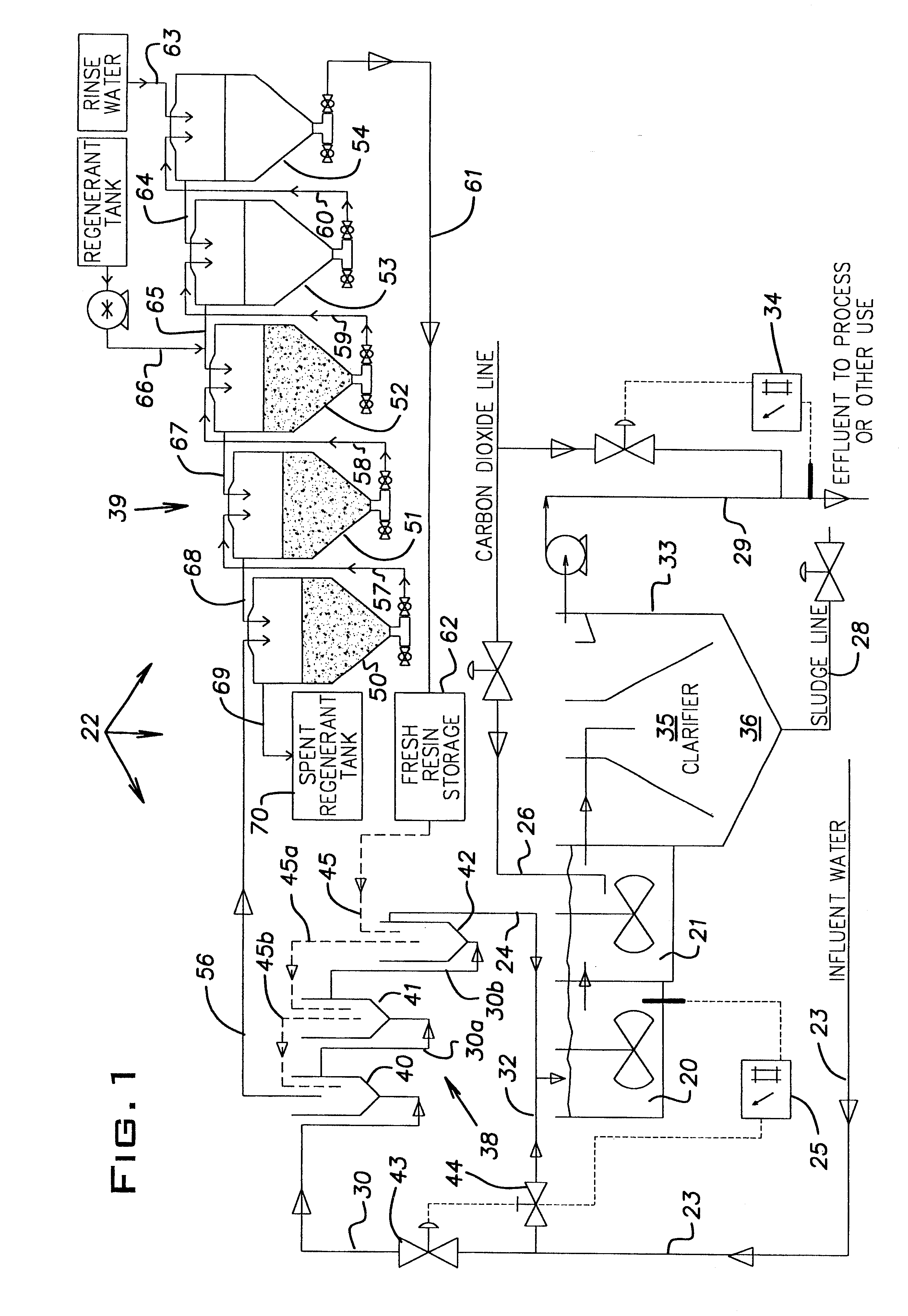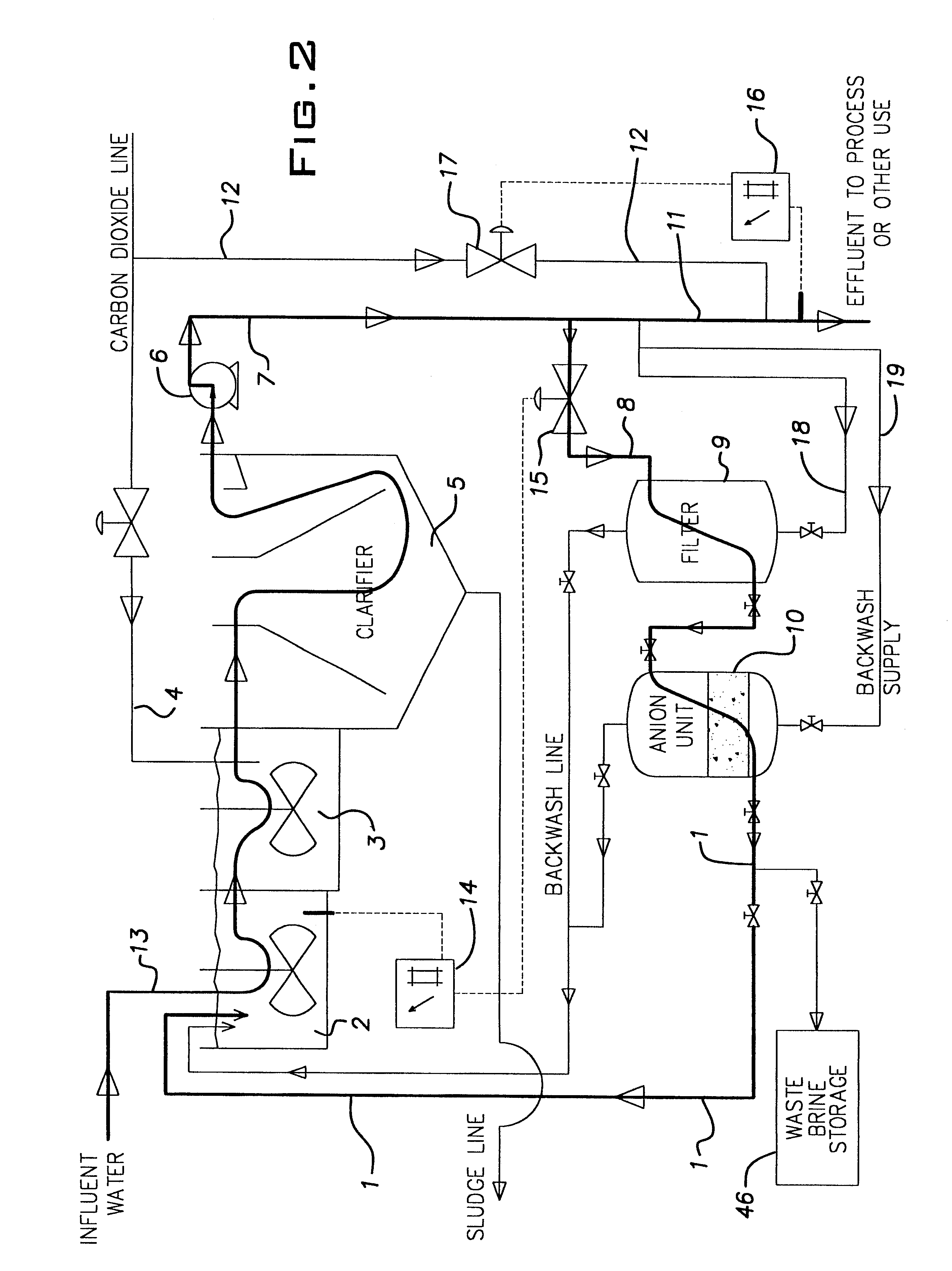Water treatment process
a water treatment process and water technology, applied in the direction of separation processes, filtration separation, moving filter element filters, etc., can solve the problems of soda ash use, generating considerable sludge, and affecting the quality of finished water,
- Summary
- Abstract
- Description
- Claims
- Application Information
AI Technical Summary
Benefits of technology
Problems solved by technology
Method used
Image
Examples
example 1
A pilot plant was set up basically as shown in FIG. 1. Tanks 40-42 were each 30-gallon conebottom tanks; tank 20 was 30 gallons (pH about 11.3-11.6) and line 32 was controlled via pH controller 25. Tank 21 (30 gallons) was used and utilized CO.sub.2 sparging via line 26 via a pH controller sensing tank 21 and maintaining pH at about 10.3-10.6. Clarifier 33 was a 70 gallon conebottom tank with overflow weir. The total flow rate was 6 gallons / min. with 2 gal / min. through line 30 to unit 38 and 4 gal / min. through line 32 directly to tank 20. Each of tanks 40-42 was filled with about one cubic foot (about 40% of capacity) of Mitsubishi DIAION SA 20A anion-exchange resin beads which had been prepared by soaking in 4% NaOH and rinsing in DI water. Total bead contact time was thus about 18 minutes.
Resin beads were moved periodically from tank 42 to tank 41 to tank 40, particularly when the pH dropped in tank 20. Tanks 50-54 were 15 gallons each; the rinse water in tank 54 came from tank 42...
example 2
Table 2 shows, for selected components, test results of water sample Nos. 6, 7 and 8 which were run through a static lab test configured or patterned basically according to the design or configuration of FIG. 2, and run as per FIG. 2 described above. The resin beads were Mitsubishi Chemical DIAION SA 20A. The numbers are parts per million.
These test results show that, to an extent that was surprising and unexpected, the process of the invention was effective in softening the water and reducing the content of selected components. The invention also surprisingly lowered the sodium and potassium concentrations, as shown in water sample No. 6.
In addition to softening the influent water, the invention also effectively reduces the concentration of undesirable anions (particularly chloride, sulfate, phosphate, nitrate and silicate) and reduces the concentration of undesirable amphoteric components and non-hardness cations. It is believed, and testing thus far has indicated, that the percen...
PUM
| Property | Measurement | Unit |
|---|---|---|
| flow rate | aaaaa | aaaaa |
| pH | aaaaa | aaaaa |
| flow rate | aaaaa | aaaaa |
Abstract
Description
Claims
Application Information
 Login to View More
Login to View More - R&D
- Intellectual Property
- Life Sciences
- Materials
- Tech Scout
- Unparalleled Data Quality
- Higher Quality Content
- 60% Fewer Hallucinations
Browse by: Latest US Patents, China's latest patents, Technical Efficacy Thesaurus, Application Domain, Technology Topic, Popular Technical Reports.
© 2025 PatSnap. All rights reserved.Legal|Privacy policy|Modern Slavery Act Transparency Statement|Sitemap|About US| Contact US: help@patsnap.com



